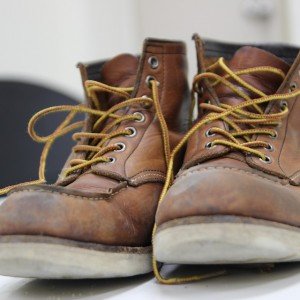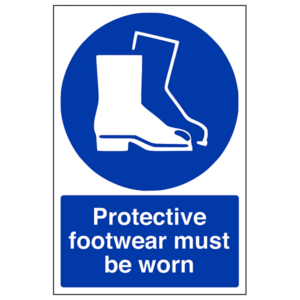Safety footwear
Safety footwear: ‘A more gender sensitive fit would be a huge leap forward’. SHP Meets Debbie Janson, chartered engineer and safety footwear guru
Debbie Janson is undertaking research into the usability of safety footwear with the University of Bath, an important topic given the impact it has on many working lives. John Kersey discusses her work on this, along with other important influences in her life.
Your background is as an engineer, what prompted you to take that up as a career?
 Debbie Janson (DJ): “I was always creative and good at problem solving when I was at secondary school. I studied physics and maths at A-level and it was just a natural progression to move into engineering, studying Mechanical Engineering at the University of Bath. I’m so fortunate that my career has been very varied and has given me a huge range of experiences, from facilitating aircraft being assembled to analysing what happens to pilots’ necks when they eject from fighter jets!”
Debbie Janson (DJ): “I was always creative and good at problem solving when I was at secondary school. I studied physics and maths at A-level and it was just a natural progression to move into engineering, studying Mechanical Engineering at the University of Bath. I’m so fortunate that my career has been very varied and has given me a huge range of experiences, from facilitating aircraft being assembled to analysing what happens to pilots’ necks when they eject from fighter jets!”
I greatly enjoyed your presentation at the European HSE Forum 4.0 in Prague and then meeting you. What inspired you to look at safety footwear as a research area at the University of Bath?
(DJ): “Thanks – I really enjoyed doing it – it’s always good to share my research! My inspiration comes from having spent so much of my career wearing uncomfortable safety footwear. It dawned on me when I purchased my latest pair that in all that time, nothing really seemed to have changed. Okay, now there are a few more styles available for women, but really, a lot of them were just men’s footwear. It may seem trivial but it’s really difficult to dress in the way that you want to, knowing that you’ve got to pull on the men’s safety boots when you arrive at work. As a female engineer, I’ve worked in some very challenging environments which isn’t helped when you can’t feel confident in what you’re wearing.”
With more women coming into areas such as construction do you think there will be more consumer power on choice and influencing the design of safety footwear?
(DJ): “Yes, for sure. Especially when more users realise that there is a choice. Safety footwear doesn’t have to be uncomfortable! I think so many of us have just accepted this as ‘a thing’ over the years, I know I did. When you compare with other footwear such as trainers, we spend a lot of time and money making sure that they fit and are comfortable, yet we wear these for much shorter periods of time than we do our safety footwear. I think it’s time to push back and demand comfort.”
What are the greatest improvements that PPE and workwear providers can make in footwear from a user point of view?
 (DJ): “A more gender sensitive fit would be a huge leap forward. A lot of safety footwear that is marketed as ‘women’s’ is still manufactured and sized for men’s feet, but women and men have different shaped feet, so women are heavily disadvantaged in terms of fit (and therefore comfort). And importantly, this applies across all PPE… for example, high-vis vests and jackets, as a woman on site, you just get given the nearest man’s size that is available which ironically, can have safety impacts in itself.
(DJ): “A more gender sensitive fit would be a huge leap forward. A lot of safety footwear that is marketed as ‘women’s’ is still manufactured and sized for men’s feet, but women and men have different shaped feet, so women are heavily disadvantaged in terms of fit (and therefore comfort). And importantly, this applies across all PPE… for example, high-vis vests and jackets, as a woman on site, you just get given the nearest man’s size that is available which ironically, can have safety impacts in itself.
“In addition, a greater range across all PPE for women would really support the drive to get more females working in industrial environments. There is currently no data on how many young women and girls give up on careers in these areas due to a lack of sense of belonging, but a poor choice or ill-fitting PPE can only endorse these feelings.”
What sort of factors are you seeing as important to users in your study?
(DJ): “I conducted the largest ever survey of safety footwear users earlier this year. Comfort and fit were really important across all respondents. When asked what they would change or improve, women looked for a broader range, better fit and improved aesthetics, whereas men were more likely to look for improved durability, comfort and fit. Women generally wore their safety footwear less (presumably because of the lack of comfort and fit) and as such didn’t report the same durability problems as men.”
Do you have any advice for safety professionals in assessing footwear ranges?
(DJ): “I would definitely make sure that you ask retailers if their women’s footwear is sized for women specifically. I see a lot of ‘unisex’ footwear! Also, ensuring there is a long-term approval process in place – i.e. they can send them back if they are still uncomfortable after maybe a few weeks of wear as anecdotally, safety footwear can take a few weeks to ‘wear in’. I would also advise ensuring that users are aware of how much of a difference a good pair of socks can make! It’s tricky because I appreciate that safety professionals are often bound by budgets and targets outside of their department, but there is a business case to be had concerning the relationship between comfort and employee wellbeing and productivity.”
Are you looking at ill fitting or unsuitable safety footwear as a factor in workplace accidents or near misses in your study?
 (DJ): “Yes, this is an area I’m looking at, although it’s very challenging to assess due to lack of data. Data sources are mainly concerned with body part related injuries, so it’s possible to see foot injuries in isolation, but not whether they were due to safety footwear (or lack of). The same is true of slips, trips and falls; the data is captured but not in relation to PPE. I think more could be done in this area to give a true reflection of the cause of incidents and not just the outcomes.”
(DJ): “Yes, this is an area I’m looking at, although it’s very challenging to assess due to lack of data. Data sources are mainly concerned with body part related injuries, so it’s possible to see foot injuries in isolation, but not whether they were due to safety footwear (or lack of). The same is true of slips, trips and falls; the data is captured but not in relation to PPE. I think more could be done in this area to give a true reflection of the cause of incidents and not just the outcomes.”
What future developments and innovations in safety footwear do you see coming along?
(DJ): “Safety footwear has come a long way in terms of using more technical materials but when we look across other footwear industries, it is lagging behind, but we can see where things might be heading. Custom-fit footwear is rapidly coming to market in other sectors (particularly athletic footwear) and would readily ease some of the comfort and fit problems experienced with safety footwear.
“Industry-specific footwear is available from a few manufacturers but is likely to become more widespread too. The most exciting area will be in the incorporation of sensors on a large scale, as part of a holistic package of PPE, for example, location tracking and fall or slip event capture. A handful of manufacturers are already on this path and it feels like an obvious next step for the industry.”
Finally I was intrigued to hear you are a lady blacksmith! I have to ask, how did that happen?
(DJ): “I just fancied having a go! I’d always enjoyed welding and thought it would be a good next step. I contacted a local blacksmith and went along to his forge for a day. It’s a truly amazing craft – fun but very hard work at the same time. I’m not in any way skilled but I love hitting the metal and creating something that will far outlast me! Trying to get the design out of my head and into reality is the biggest challenge (aside from the hammer blisters). Those who do it for a living love to share their craft, so I would encourage anyone to get in touch with their local blacksmith and have a go!”
Safety footwear: ‘A more gender sensitive fit would be a huge leap forward’. SHP Meets Debbie Janson, chartered engineer and safety footwear guru
Debbie Janson is undertaking research into the usability of safety footwear with the University of Bath, an important topic given the impact it has on many working lives.
John Kersey
SHP - Health and Safety News, Legislation, PPE, CPD and Resources Related Topics
Inclusivity in PPE: The manufacturer’s perspective
Future-proofing safety: Five trends shaping the PPE landscape of tomorrow
Arco backs SHP campaign for PPE inclusivity

 Debbie Janson (DJ): “I was always creative and good at problem solving when I was at secondary school. I studied physics and maths at A-level and it was just a natural progression to move into engineering, studying Mechanical Engineering at the University of Bath. I’m so fortunate that my career has been very varied and has given me a huge range of experiences, from facilitating aircraft being assembled to analysing what happens to pilots’ necks when they eject from fighter jets!”
Debbie Janson (DJ): “I was always creative and good at problem solving when I was at secondary school. I studied physics and maths at A-level and it was just a natural progression to move into engineering, studying Mechanical Engineering at the University of Bath. I’m so fortunate that my career has been very varied and has given me a huge range of experiences, from facilitating aircraft being assembled to analysing what happens to pilots’ necks when they eject from fighter jets!” (DJ): “A more gender sensitive fit would be a huge leap forward. A lot of safety footwear that is marketed as ‘women’s’ is still manufactured and sized for men’s feet, but women and men have different shaped feet, so women are heavily disadvantaged in terms of fit (and therefore comfort). And importantly, this applies across all
(DJ): “A more gender sensitive fit would be a huge leap forward. A lot of safety footwear that is marketed as ‘women’s’ is still manufactured and sized for men’s feet, but women and men have different shaped feet, so women are heavily disadvantaged in terms of fit (and therefore comfort). And importantly, this applies across all  (DJ): “Yes, this is an area I’m looking at, although it’s very challenging to assess due to lack of data. Data sources are mainly concerned with body part related injuries, so it’s possible to see foot injuries in isolation, but not whether they were due to safety footwear (or lack of). The same is true of
(DJ): “Yes, this is an area I’m looking at, although it’s very challenging to assess due to lack of data. Data sources are mainly concerned with body part related injuries, so it’s possible to see foot injuries in isolation, but not whether they were due to safety footwear (or lack of). The same is true of